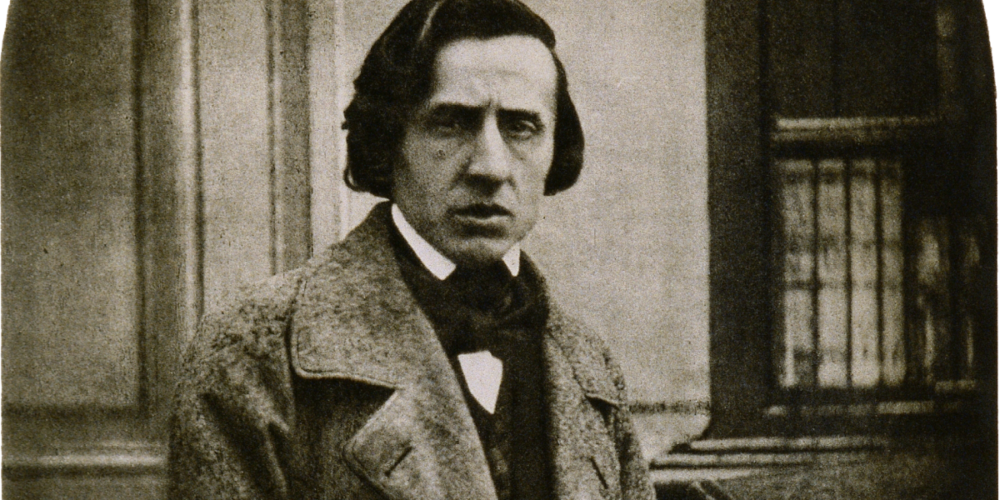Fryderyk Chopin was born on 22 February 1810 in Żelazowa Wola, near Warsaw, to a Polish mother and a French father. He grew up in Warsaw but left Poland in 1831, shortly before the Polish popular uprising against the tsarist oppressors. He moved to Paris, where he lived until his death, aged only thirty-nine, on 17 October 1849.
In Paris he made friends with some of the most outstanding progressive figures of his time: with the great Frenchwoman George Sand, who became his lover, the Hungarian nationalist and composer Franz Liszt, the revolutionary French painter Eugène Delacroix, the great Polish poet and political activist Adam Mickiewicz, the exiled German poet Heinrich Heine, and others.
Chopin always remained close to Poland. During the 1830s and 40s Europe experienced political repression, unrest, and conservatism. In this atmosphere the great significance of national cultures in shaping national consciousness and the struggle for independence became increasingly important and apparent. This growing national awareness was also reflected in the arts and in music.
Polish music was no exception. The Polish people, who suffered the triple occupation by Prussia, Russia, and Austria, who were deprived of their independence, who suffered terribly under the pressure of the Holy Alliance, whose national culture was being suppressed—this people proved through its art that it was alive and fighting. The genius of a Mickiewicz in poetry, the genius of a Chopin in music, reflect this struggle in their art.
Chopin wrote mainly music for the piano. He chose smaller forms to express the struggle and aspirations of his people, frequently using Polish peasant dance forms, such as the mazurka and polonaise. He revived the music of the whole nation. The folk music of Poland informed his harmonic language.
Chopin’s music not only defined a tradition in Poland but has contributed to our musical heritage internationally. It is an assertion of Polish resistance, something that all independence-loving people can identify with.
Polonaise in A flat major (1842)
Chopin created seventeen polonaises in total, his first when he was seven years old, and seven of these after he left Poland. The later compositions opened a new chapter in the history of the genre in the direction of the “epic-dramatic poem.” Each of these seven mature dramatic works has its own distinctive shape, style, and expression.
The last three compositions are grand dance poems. Chopin’s late Polonaise in A flat major (Opus 53, Héroïque) is written in a heroic tone. On hearing it, George Sand wrote in one of her letters: “The inspiration! The force! The vigour! There is no doubt that such a spirit must be present in the French Revolution. From now on this polonaise should be a symbol, a heroic symbol.”
Its stormy octaves in the middle section have suggested to some commentators the image of attacking hussars, to others an attacking cavalcade. Some have called it the “secret national anthem” of Poland.
However, Chopin did not leave a “story” to go with this polonaise. I think it is perhaps best understood as the triumph of the Polish dance. The theme is confident and dance-like. It goes through various developments and returns jubilant, proud and heroic in a clearly victorious coda. And it is in this context of the triumphant people that Sand’s comment makes complete sense.
■ Listen to it here: www.youtube.com/watch?v=oWBT6vOKu0Q.






